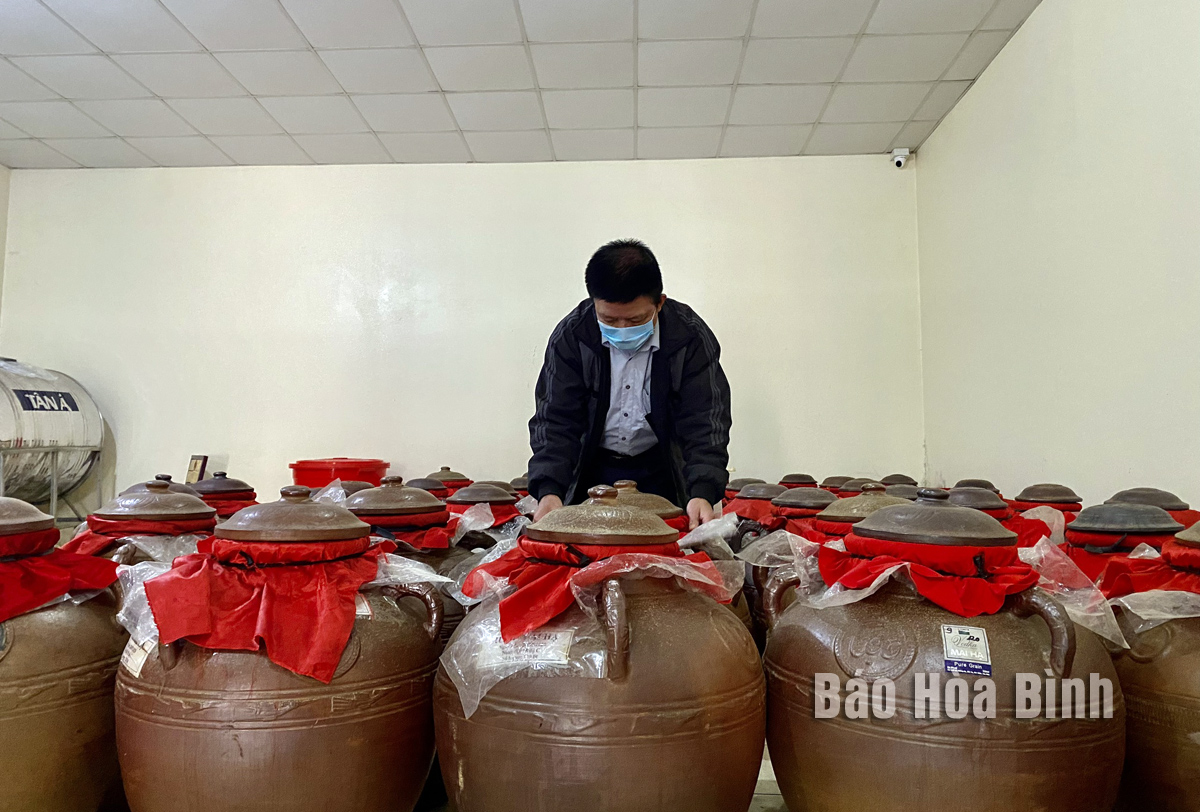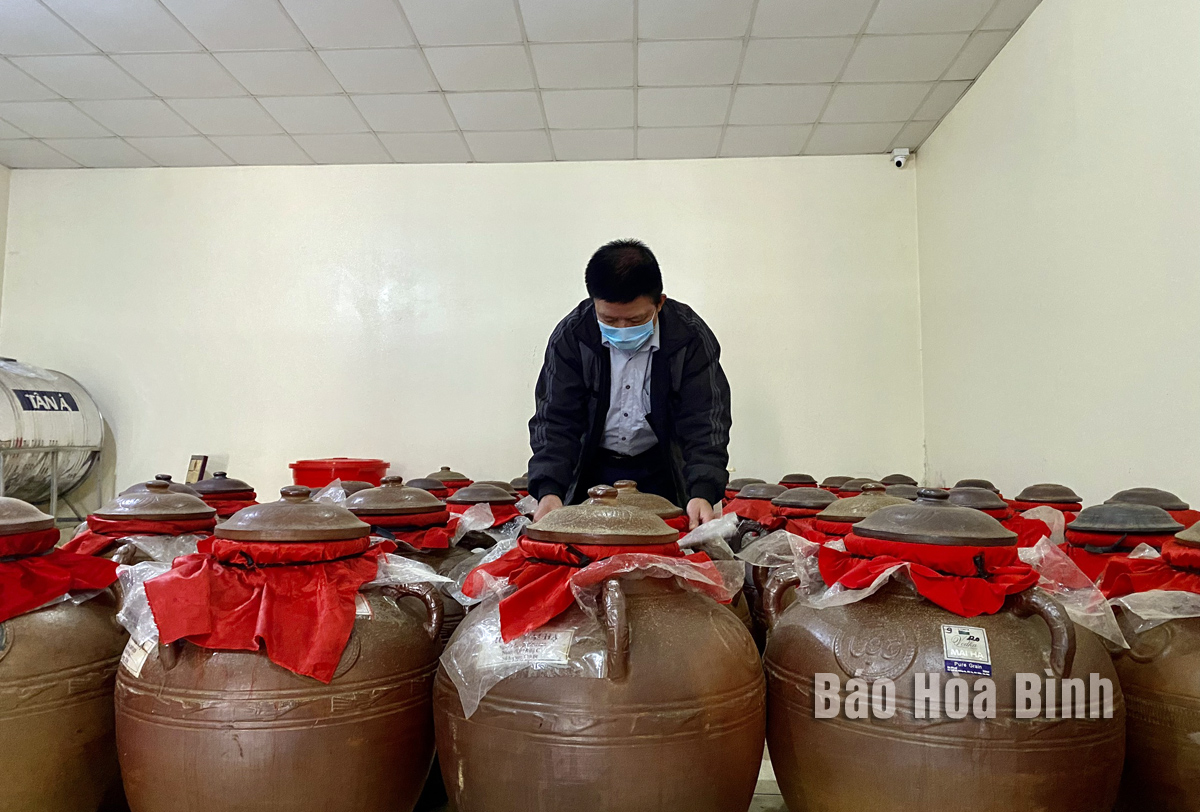
Hoa Binh province is home to 11 recognised traditional craft villages which have played a crucial role in increasing income, improving living conditions, and driving economic growth in rural areas.
Residents of Mai Ha alcohol village (Mai Ha commune, Mai Chau district) examine product quality before distribution.
Among these, Mai Ha alcohol village in Mai Ha commune, Mai Chau district, stands out as a model of cultural preservation combined with economic growth. Mai Ha alcohol is not only a distinctive local beverage but also a source of pride for the community.
Mai Ha alcohol stands out for its traditional distillation, using natural underground water and a unique herbal fermentation starter made from over a dozen forest plants. This process, refined over generations, produces a crystal-clear liquor with a smooth taste and lingering sweetness.
More than 200 households in the village produce thousands of litres of alcohol annually, gaining nationwide recognition. The brand has earned a three-star rating under the national One Commune One Product (OCOP) programme, boosting its market value and distribution.
Beyond providing stable income, alcohol production preserves a cultural heritage passed down through generations. The village has become a tourist attraction, drawing visitors eager to witness the process and sample the famed liquor.
According to the provincial Sub-Department of Rural Development, Hoa Binh has 11 recognised craft villages. Two of them, including Mai Ha, specialise in alcohol production, while others focus on woodwork, bamboo weaving, ceramics, and brocade textiles. These industries sustain traditional values while generating income for rural communities.
The province’s craft villages employ around 1,300 workers, with monthly wages ranging from 3 to 5 million VND. Many have developed OCOP-certified products, enhancing market appeal.
Despite their contributions, challenges persist such as unstable raw material supplies, market competition, a lack of skilled successors, and outdated production techniques. Despite the government's support policies, access to loans and trade promotion remain limited.
Hoang Van Tuan, Deputy Director of the Sub-Department of Rural Development, reaffirmed the province’s commitment to training programmes, business networking, and product promotion. Authorities are also strengthening quality control and embracing digital transformation, registering products for traceability and showcasing them on e-commerce platforms to expand markets.
These combined efforts are driving Hoa Binh’s craft villages forward, contributing to the rural areas' development.
According to data from the Hoa Binh Provincial Party Committee, the industrial production index for the first six months of 2025 is estimated to have increased by 20% compared to the same period last year. This marks the highest year-on-year growth rate for this period since 2020.
In the first six months of 2025, Hoa Binh province’s export turnover was estimated at 1.145 billion USD, marking an 18.11% increase compared to the same period in 2024. Import turnover was estimated at $ 804 million, a 17.15% increase, which helped the province maintain a positive trade balance.
The lives of the ethnic minority farmers in Tan Lac district have gradually improved thanks to the new directions in agricultural production. This is a testament to the collective strength fostered through the professional associations and groups implemented by various levels of the district’s Farmers’ Union.
With the motto the "product quality comes first,” after nearly one year of establishment and operation, Muong village’s Clean Food Agricultural and Commercial Cooperative, located in Cau Hamlet, Hung Son Commune (Kim Boi district), has launched reputable, high-quality agricultural products to the market that are well-received by consumers. The products such as Muong village’s pork sausage, salt-cured chicken, and salt-cured pork hocks have gradually carved out a place in the market and they are on the path to obtaining the OCOP certification.
In the past, the phrase "bumper harvest, rock-bottom prices" was a familiar refrain for Vietnamese farmers engaged in fragmented, small-scale agriculture. But today, a new spirit is emerging across rural areas of Hoa Binh province - one of collaboration, organisation, and collective economic models that provide a stable foundation for production.
Maintaining growing area codes and packing facility codes in accordance with regulations is a mandatory requirement for agricultural products to be eligible for export. Recently, the Department of Agriculture and Environment of Hoa Binh province has intensified technical supervision of designated farming areas and packing facilities to safeguard the "green passport" that enables its products to access international markets.



